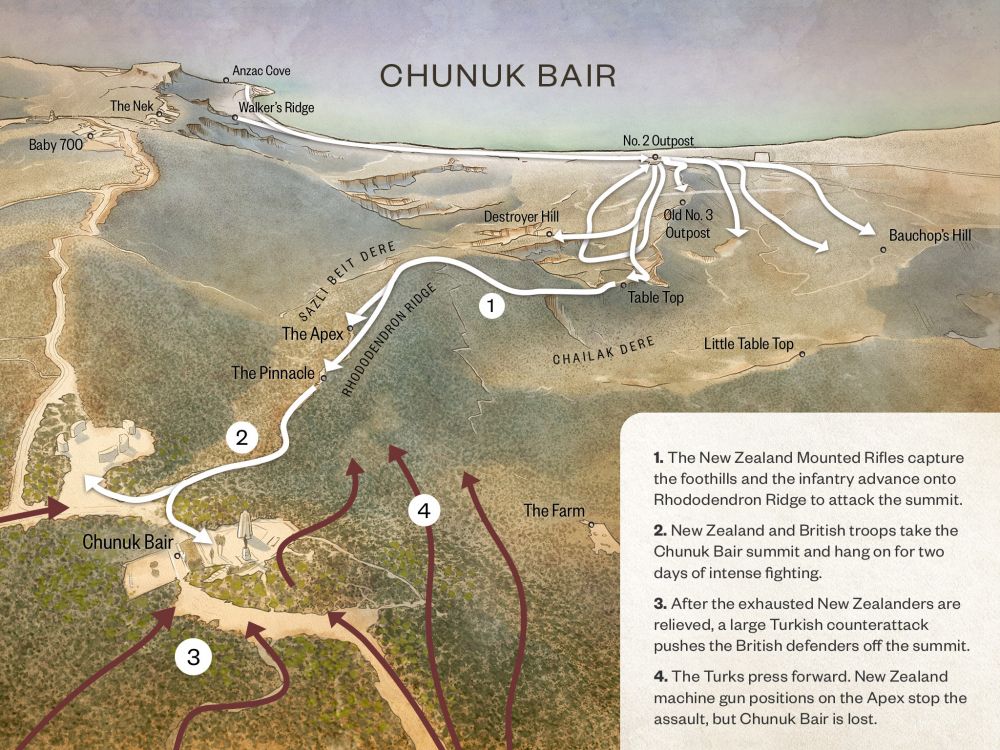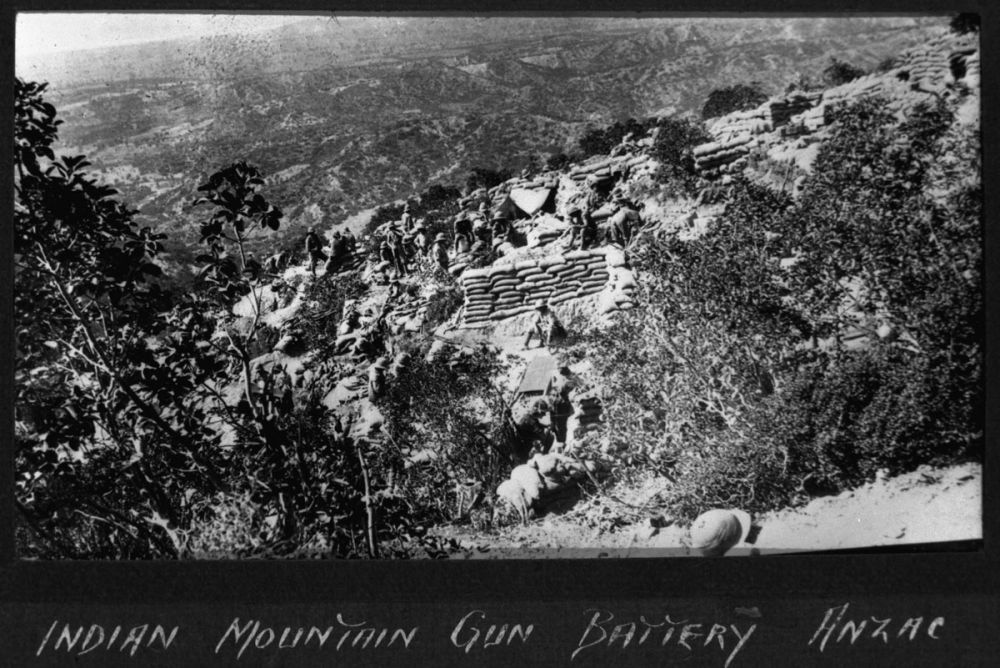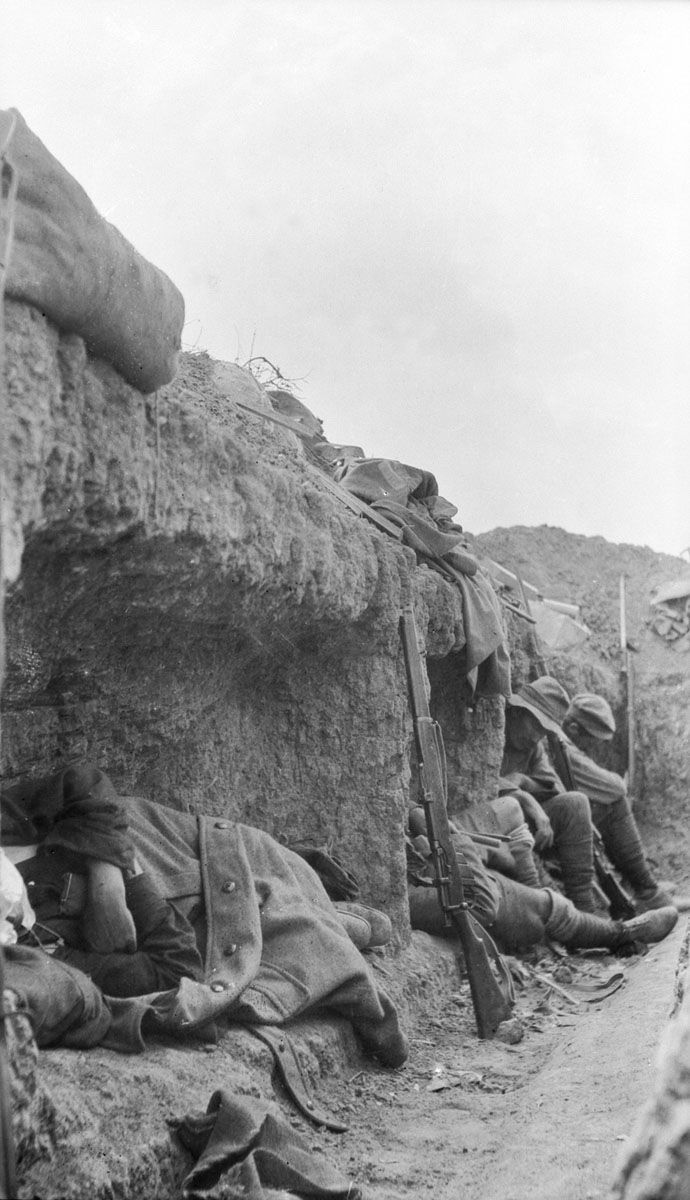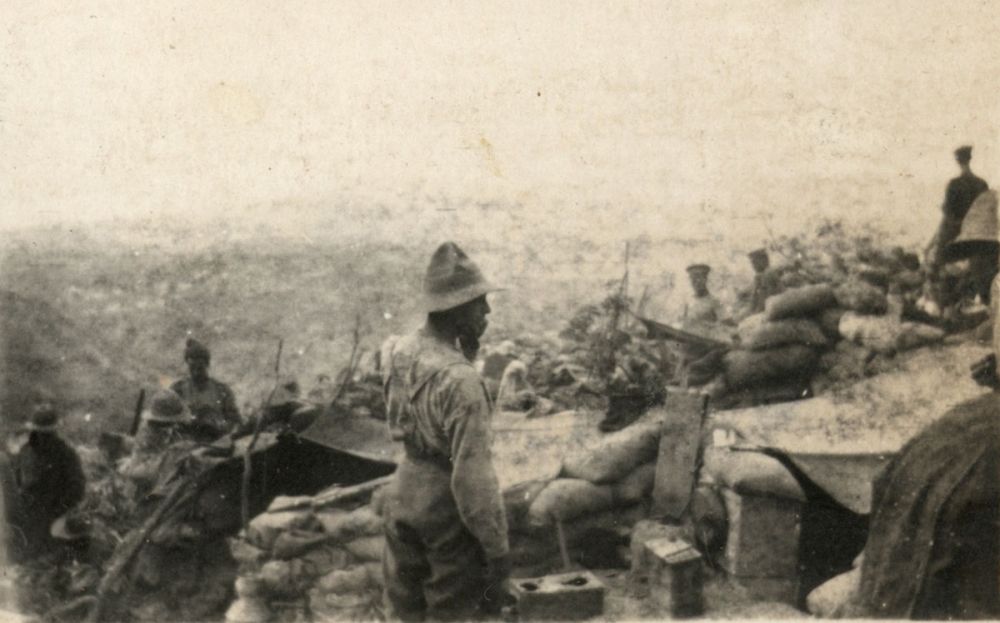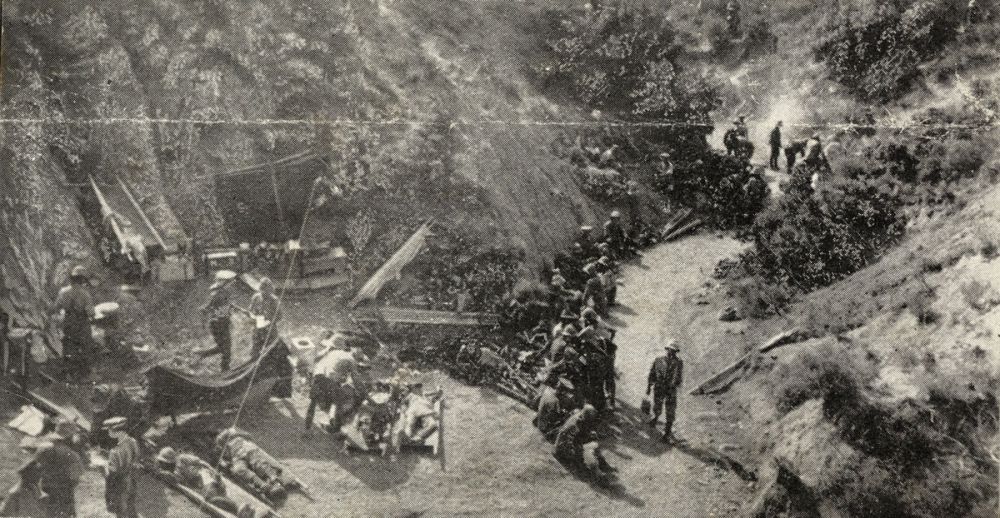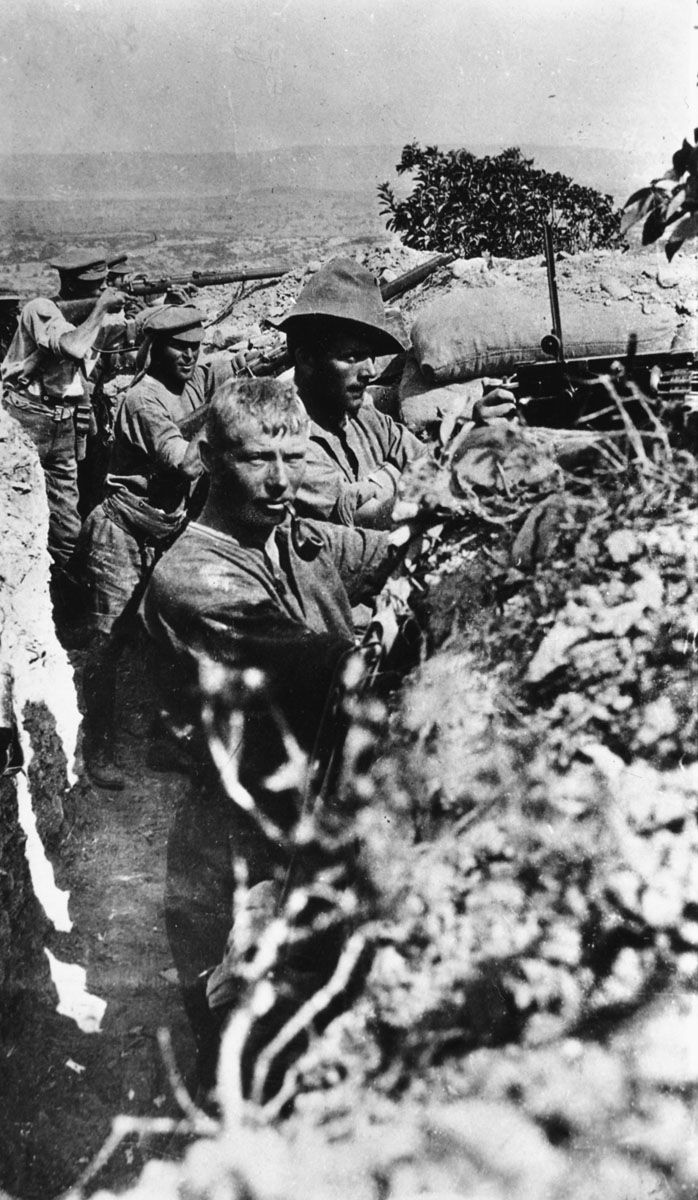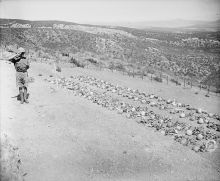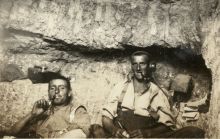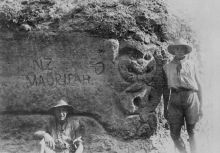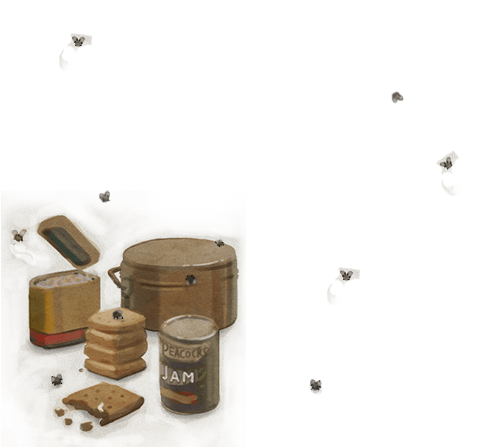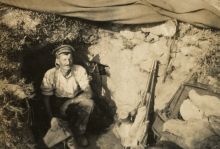The Apex
You’re standing on Rhododendron Ridge, just forward of what is known as the Apex. This is where this ridge meets the ridge running through the trees on your left. The junction point is marked by these large tunnels which were dug by the Anzacs after the August offensive. After August 1915, the Apex became the Anzac front line. We’re standing on a ‘Swiss cheese’, because there is a whole matrix of tunnels and underground chambers beneath the surface. If you go down into the bush on the left, you’ll find a whole network of trenches marking the Anzac front line.
At first light on 7 August 1915, Lieutenant-Colonel William Malone’s Wellington Infantry Battalion occupied this ground and the ridge to the left. Malone sent scouts up towards the summit. He was ready to mount an attack to take Chunuk Bair. Early in the morning, before dawn, was a golden opportunity. Malone sent a message to Brigadier General Earl Johnston, commander of the New Zealand Infantry Brigade, telling him where he was, and asked for permission to attack. Johnston hesitated, believing he did not have enough support for an attack, and decided to wait.
Meanwhile, the Australian Light Horse attacked the Turks at the Nek, in support of the New Zealand advance, and were annihilated. A telephone link was established from General Godley’s headquarters down at the beach to Johnston’s headquarters at the Apex.
Godley told Johnston to attack at once. If you can imagine the situation here, the Wellingtons were tired men, conscious that their one water bottle was all the water they had. Most men were just sucking on stones to try and keep some moisture in their mouths, and many were suffering from dysentery. It was a battalion of sick, exhausted men, just hanging on, waiting to attack.
Johnston decided that the Wellingtons would stay and hold the ridge. The only other battalion that he could use was the Auckland Infantry Battalion. Their commander, Lieutenant-Colonel Bobby Young, was directed to attack along the line of this track and seize the summit.
Bobby Young did not like the job. By the time his battalion moved up here, it was about 10 am. Artillery and warships were pounding the top of the hill, and once the barrage finished, Young was to attack in broad daylight. He made a recce up the track and immediately came under rifle and shrapnel fire. He turned to Captain Jesse Wallingford, the brigade machine-gun officer, and said, ‘For God’s sake Wallingford get your guns up and cover me, or my men will be cut to pieces’.
But Brigadier-General Johnston wouldn’t wait for Wallingford to bring up the guns. He was anxious for the attack to start and ordered it before the machine guns were in place. The Aucklanders advanced from where you are standing to the next tiny rise about 80–90 metres along the track. In 20 minutes, they were shot to shreds, losing some 300 men.
The wounded lay out all day, moaning in the hot sun, and no one could do anything for them because any movement forward was picked off by Turkish snipers.
Johnston turned to Malone, who commanded his only remaining intact battalion and told him to attack, but Malone refused. And, according to an eye-witness account, there was an argument right about where you’re standing with Malone telling the Brigadier-General that he would attack by night, but would not send his men to commit suicide by day.


